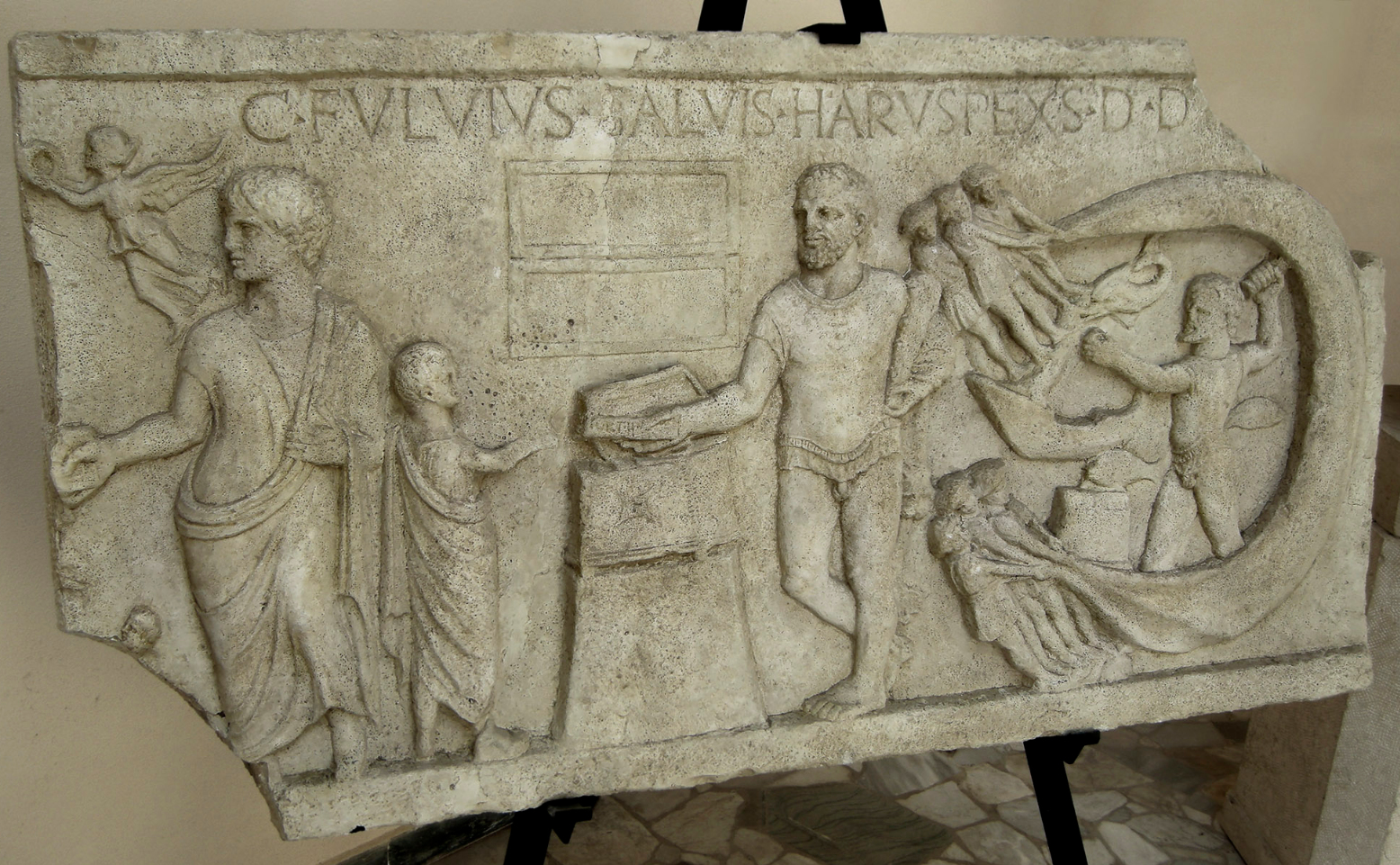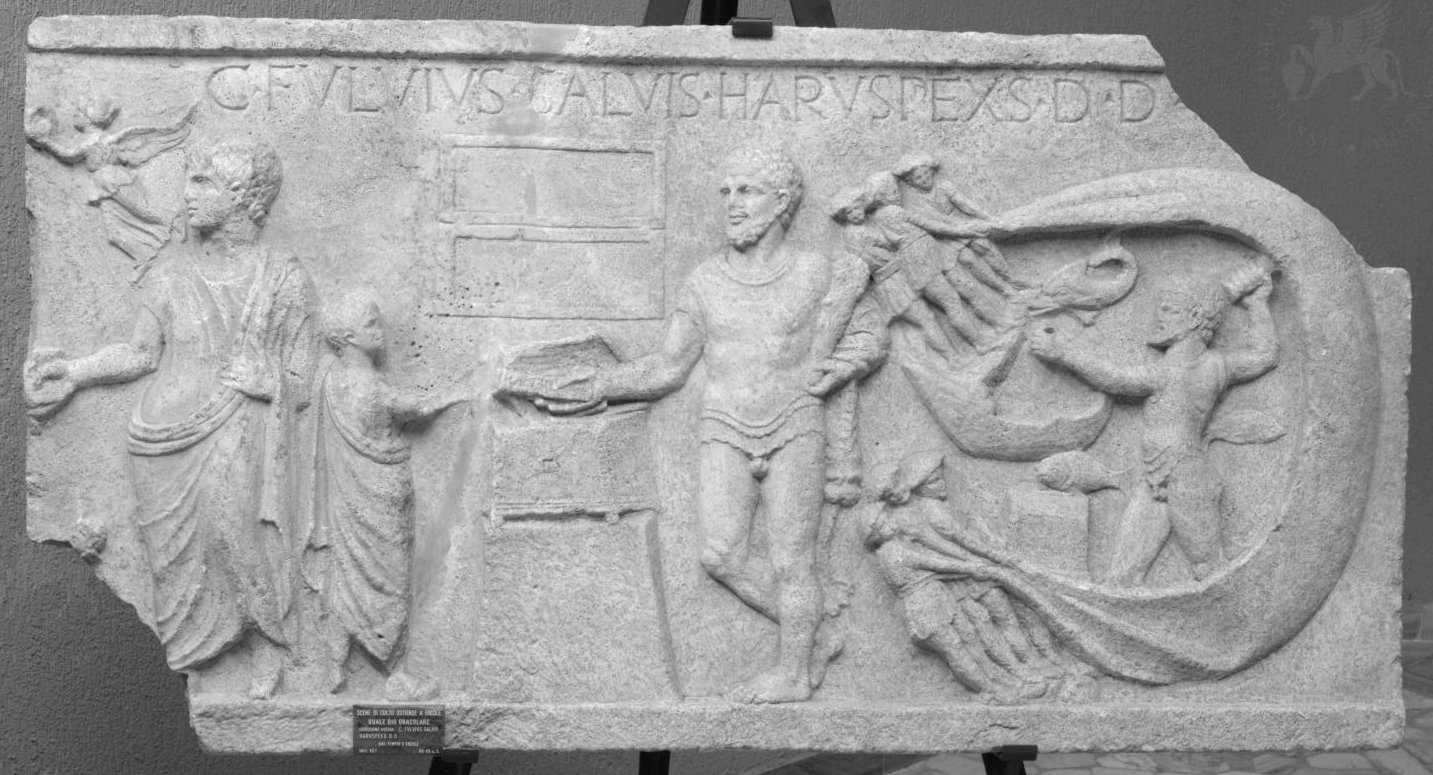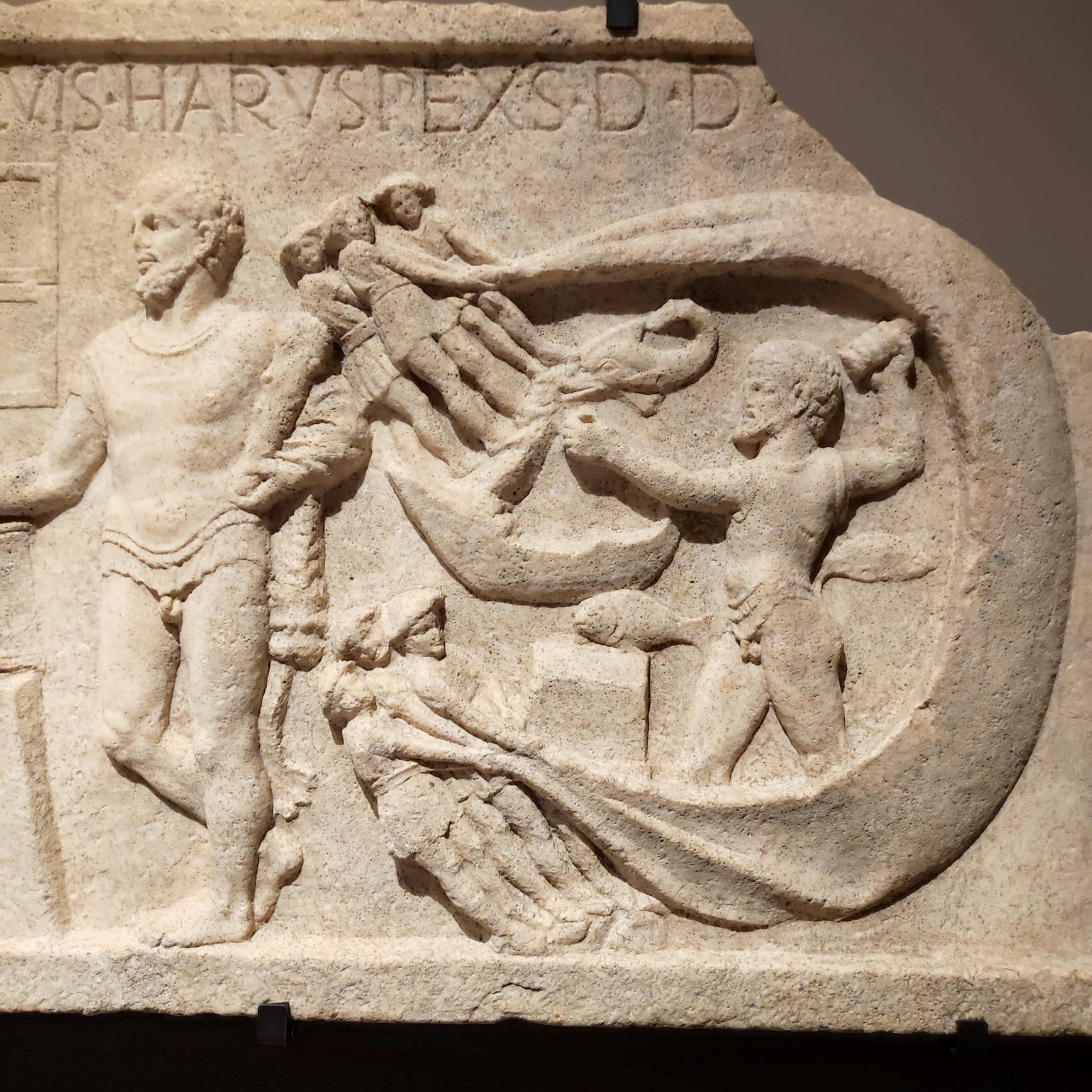Relief of limestone with Hercules, dedicated by Caius Fulvius Salvis (157)
Found in the Tempio di Ercole (I,XV,5).
Date: early first century BC. W. 1.45, h. 0.71, d. 0.10.
Three scenes are depicted, apparently to be seen from right to left. In the first scene are two groups of three fishermen pulling at a net. In the net are an empty ship, three fishes, and a statue of Hercules. Near Hercules is a box. In the second scene Hercules takes a folded tablet from a box that is identical to the box in the first scene, and hands it over to an attendant. This is an oracular response (sors). On the tablet is the text [s]ort(es) H(erculis). Above the figures is an open tablet. In the third scene a priest in a toga hands over the sors to another person, now lost, near whom is a small, winged Victoria with a wreath. The name of the priest (haruspex) is known from the accompanying inscription: Caius Fulvius Salvis. Apparently a cult statue of Hercules was found in a miracular way. Perhaps it was a statue that had been taken to Rome from Greece, but was lost near Ostia. Together with the statue a chest with oracles seems to have been found. And at some occasion the deity predicted a military victory, witness the presence of Victoria. Haruspices were soothsayers, diviners among the Etruscans, who foretold future events from the inspection of the entrails of victims. They were later introduced among the Romans.



|
C(aius) FVLVIVS SALVIS HARVSPEXS D(onum) D(edit) (or D(edit) D(edicavit)) On the object that Hercules is giving to a man, with very small letters: [S]ORT(es) H(erculis) |
Arachne 1083663. Helbig nr. 3103. Guida p. 63-64 nr. 11. Guida 2024, 40-41. EDR073462. Photos: Sergey Sosnovskiy, Arachne, and Parco Archeologico di Ostia Antica.